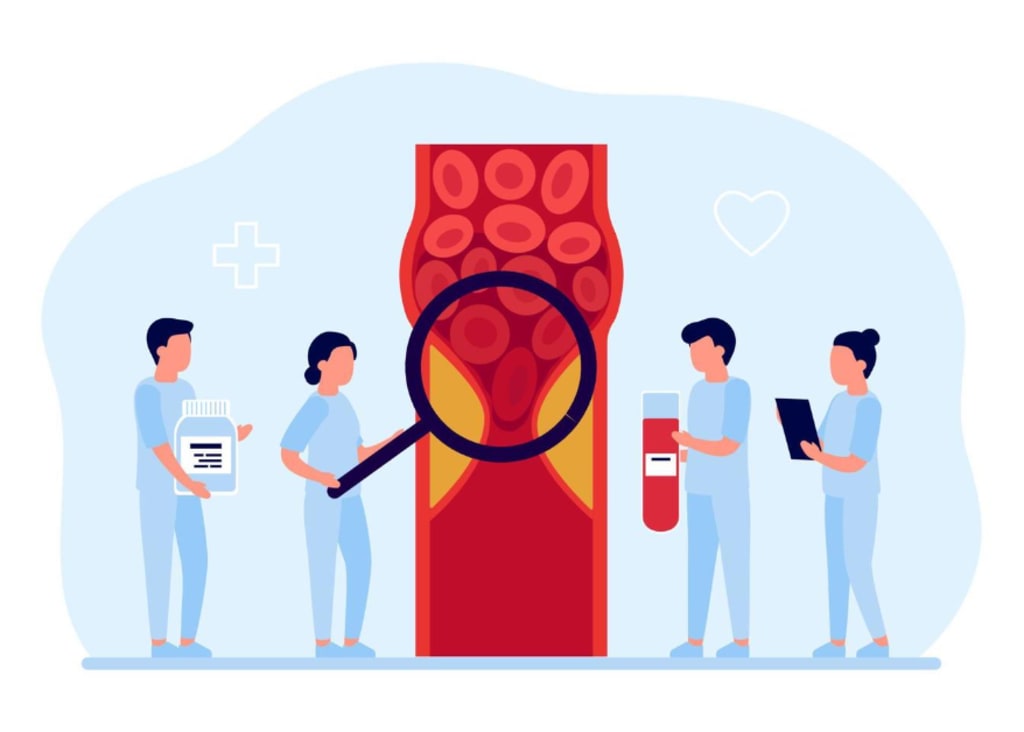Understanding Circulation in the Human Body
How does blood circulate?

Blood circulation is one of the most crucial processes in the human body. This intricate system ensures that oxygen, nutrients, and waste products are efficiently transported to and from the body's tissues and organs. Here's a closer look at how this vital system works.
### The Circulatory System: An Overview
The circulatory system, also known as the cardiovascular system, is composed of the heart, blood vessels, and blood. It functions as a transportation network, delivering essential substances to cells and removing waste products. The heart acts as the system's pump, propelling blood through a vast network of vessels.
### The Heart: The Central Pump
The heart is a muscular organ located in the chest cavity. It has four chambers: two atria (upper chambers) and two ventricles (lower chambers). The right side of the heart receives deoxygenated blood from the body and pumps it to the lungs for oxygenation. The left side of the heart receives oxygen-rich blood from the lungs and pumps it throughout the body.
#### The Path of Blood Flow
1. **Deoxygenated Blood to the Lungs**:
- Blood from the body enters the right atrium via the superior and inferior vena cava.
- The right atrium contracts, pushing blood into the right ventricle.
- The right ventricle pumps the deoxygenated blood through the pulmonary artery to the lungs.
2. **Oxygenated Blood to the Body**:
- In the lungs, blood releases carbon dioxide and picks up oxygen.
- Oxygen-rich blood returns to the left atrium via the pulmonary veins.
- The left atrium contracts, moving blood into the left ventricle.
- The left ventricle pumps the oxygenated blood through the aorta, the body's largest artery, distributing it to the rest of the body.
### Blood Vessels: The Network of Highways
Blood vessels are the conduits through which blood travels. There are three main types of blood vessels:
1. **Arteries**: These vessels carry oxygenated blood away from the heart to the body's tissues. They have thick, elastic walls to withstand high pressure.
2. **Veins**: Veins return deoxygenated blood back to the heart. They have thinner walls and valves to prevent backflow, ensuring blood moves in one direction.
3. **Capillaries**: These tiny vessels connect arteries and veins. Their thin walls allow for the exchange of oxygen, nutrients, and waste products between blood and tissues.
### The Circulatory Pathways
There are two primary circulatory pathways in the human body:
1. **Systemic Circulation**: This pathway carries oxygenated blood from the left side of the heart to the rest of the body and returns deoxygenated blood to the right side of the heart.
2. **Pulmonary Circulation**: This pathway transports deoxygenated blood from the right side of the heart to the lungs for oxygenation and then returns oxygenated blood to the left side of the heart.
### The Role of Blood
Blood is a specialized bodily fluid with several crucial functions:
1. **Transportation**: Blood transports oxygen from the lungs to cells, nutrients from the digestive system, and hormones from glands. It also carries carbon dioxide and other waste products to the lungs, kidneys, and liver for elimination.
2. **Regulation**: Blood helps regulate body temperature, pH levels, and water balance.
3. **Protection**: Blood contains white blood cells and antibodies that help fight infections. Platelets in the blood are essential for clotting and wound healing.
### Conclusion
Understanding how blood circulates helps us appreciate the complexity and efficiency of the human body. This remarkable system ensures that every cell receives the oxygen and nutrients it needs while removing waste products that could harm the body. Maintaining cardiovascular health through a balanced diet, regular exercise, and avoiding harmful habits is essential for ensuring this life-sustaining process continues to function optimally.
By keeping our circulatory system healthy, we support our overall well-being and longevity. The next time you feel your pulse or hear your heartbeat, remember the incredible journey your blood takes every second to keep you alive and thriving.
## The Path of Blood Flow: A Journey Through the Human Body
The human circulatory system is a marvel of biological engineering, efficiently transporting blood throughout the body to sustain life. Understanding the path of blood flow offers insight into how oxygen, nutrients, and waste products are exchanged between the heart, lungs, and tissues. Let's take a closer look at this vital process.
### The Heart: The Central Pump
At the core of the circulatory system lies the heart, a powerful muscle that functions as the body's central pump. It consists of four chambers: two atria (upper chambers) and two ventricles (lower chambers). The heart's primary role is to propel blood through two distinct circulatory pathways: systemic and pulmonary circulation.
### The Pathway of Blood Flow
#### 1. Deoxygenated Blood to the Lungs (Pulmonary Circulation)
1. **Right Atrium**: Blood returning from the body, depleted of oxygen and laden with carbon dioxide, enters the right atrium via two large veins: the superior vena cava and the inferior vena cava.
2. **Right Ventricle**: When the right atrium contracts, blood is pushed through the tricuspid valve into the right ventricle.
3. **Pulmonary Artery**: The right ventricle contracts, sending blood through the pulmonary valve into the pulmonary artery. This artery splits into two branches, each leading to one lung.
4. **Lungs**: In the lungs, blood travels through tiny capillaries surrounding the alveoli (air sacs). Here, carbon dioxide is exchanged for oxygen through the process of respiration.
#### 2. Oxygenated Blood to the Body (Systemic Circulation)
5. **Left Atrium**: Oxygen-rich blood returns from the lungs to the left atrium via the pulmonary veins.
6. **Left Ventricle**: When the left atrium contracts, blood moves through the mitral valve into the left ventricle.
7. **Aorta**: The left ventricle, the heart's most powerful chamber, contracts and pumps blood through the aortic valve into the aorta, the body's largest artery.
8. **Arteries**: From the aorta, blood is distributed through a network of arteries to various parts of the body. Arteries branch into smaller arterioles and finally into capillaries.
9. **Capillaries**: In the capillaries, blood exchanges oxygen and nutrients for carbon dioxide and waste products with the body's cells.
10. **Veins**: Deoxygenated blood is collected from the capillaries into venules, which merge into veins. The veins channel blood back to the heart, completing the circuit.
### Blood Vessels: The Highways of Circulation
Blood vessels are the conduits that transport blood throughout the body. There are three main types:
1. **Arteries**: Thick-walled vessels that carry oxygenated blood away from the heart. They must withstand high pressure as they deliver blood to tissues.
2. **Veins**: Thinner-walled vessels that return deoxygenated blood to the heart. Veins contain valves to prevent backflow and ensure one-way movement of blood.
3. **Capillaries**: The smallest blood vessels with thin walls that facilitate the exchange of oxygen, nutrients, and waste products between blood and tissues.
### The Importance of Healthy Circulation
Efficient blood flow is essential for maintaining overall health. It ensures that oxygen and nutrients reach every cell, while waste products are promptly removed. Poor circulation can lead to various health issues, including cardiovascular disease, tissue damage, and impaired organ function.
### Conclusion
The path of blood flow through the heart, lungs, and body is a continuous, life-sustaining process. By understanding this journey, we gain a deeper appreciation for the intricate and efficient design of the human circulatory system. Maintaining cardiovascular health through regular exercise, a balanced diet, and avoiding harmful habits is crucial for ensuring this vital system functions optimally.the 20 Flow Nitric Oxide Booster Reviews
Every heartbeat propels blood on its remarkable journey, sustaining life and health throughout the body. Remember this incredible process the next time you feel your pulse or take a deep breath, and consider how each beat and breath supports your well-being.
About the Creator
peter
Content about cars, motorbikes, technology, news
Enjoyed the story? Support the Creator.
Subscribe for free to receive all their stories in your feed. You could also pledge your support or give them a one-off tip, letting them know you appreciate their work.






Comments (1)
I am a retired nurse and this is a great review of the circulatory system.